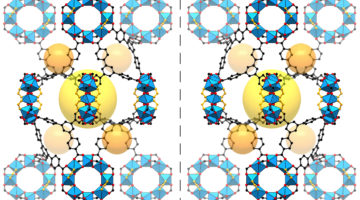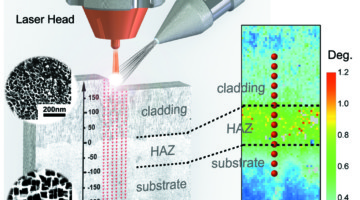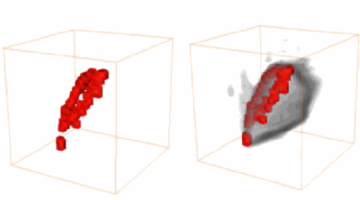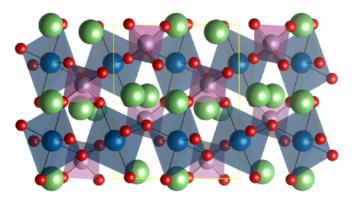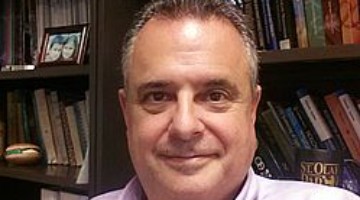A beamstop device recently developed at the ALS has successfully combined two essential crystallographic functions–capturing the damaging portion of the beam while simultaneously monitoring its intensity–into a single miniaturized package. The technology has been licensed and launched commercially and is also a finalist for an R&D 100 Award. Read more »![]()
ALSNews Vol. 378
DECEMBER 14, 2016
A New Way to Determine the 3D Structure of Molecules
Researchers have created a sort of nanoscale display case that enables new atomic-scale views of hard-to-study chemical and biological samples. The work could help to reveal new structural details for a range of challenging molecules by stabilizing them inside sturdy structures known as metal-organic frameworks (MOFs). Read more »![]()
![]()
New Multiferroic Material for Ultralow-Power Electronics
Scientists paired ferroelectric and ferrimagnetic materials so that their alignment can be controlled with a small electric field at near room temperatures, a major step in the development of ultralow-power microprocessors, storage devices, and next-generation electronics. Read more »![]()
![]()
X-Rays Help Evaluate Quality of 3D-Printed Repairs
Laser 3D printing is a promising way to repair machine parts (such as jet-engine turbine blades) made of single-crystal superalloys. But microstructural inhomogeneities created by the high-power laser are a major reliability concern, so researchers employed x-ray Laue microdiffraction to probe the microstructure. Read more »
3D Visualization of the Behavior of Grease Additives
Lubricants help keep civilization running smoothly, but is there room for improvement? With the goal of increasing the life span and lowering the costs of all kinds of mechanical and biological systems, researchers used x-ray microtomography to visualize the behavior of grease additives under working conditions. Read more »
Understanding Barriers to Higher-Capacity Rechargeable Batteries
Vanadyl phosphate can theoretically accept twice the number of lithium ions as battery materials currently in use. In practice, however, it doesn’t live up to expectations. New research at Beamline 6.3.1 using a variety of hard and soft x-ray spectroscopies helps zero in on why. Read more »
Industrial-Academic Collaboration Gives Nanoscale Insight into Batteries
An industrial collaboration between Hummingbird Scientific and a team of researchers from the ALS, SLAC, Berkeley Lab, Stanford University, and other institutions has resulted in a new x-ray microscopy platform that gives scientists the ability to image nanoscale changes inside lithium-ion battery particles in real time as they charge and discharge. Insights obtained from the imaging platform have already provided surprising new insights and could help researchers improve batteries for electric vehicles as well as smart phones, laptops, and other devices. Read more »![]()
Exploring the Structure of Aqueous Solutions with SALSA
Researchers have published a series of papers that open up the possibility of probing hydrogen bonds in aqueous solutions by combining x-ray emission spectroscopy and resonant inelastic soft x-ray scattering, using the specialized Solid and Liquid Spectroscopic Analysis (SALSA) endstation at Beamline 8.0.1. Read more »
Fernando Sannibale, Division Deputy for Accelerator Operations and Development
Fernando Sannibale, previously the principal investigator of the Advanced Photoinjector Experiment (APEX) at LBNL, has recently taken on a new role as leader of the ongoing ALS Accelerator Physics program in the Accelerator Technology and Applied Physics Division and will also serve as the ALS Division Deputy for Accelerator Operations and Development. We recently sat down with Sannibale to talk about his years at the ALS and what he hopes to accomplish in his new role. Read more »
Meet the New UEC Members
The results of the ALS Users’ Executive Committee (UEC) election are in, and six new members have been chosen, including a new student representative. They will each serve on the committee for three years (two years for the student representative), starting on January 1, 2017. Read more »

